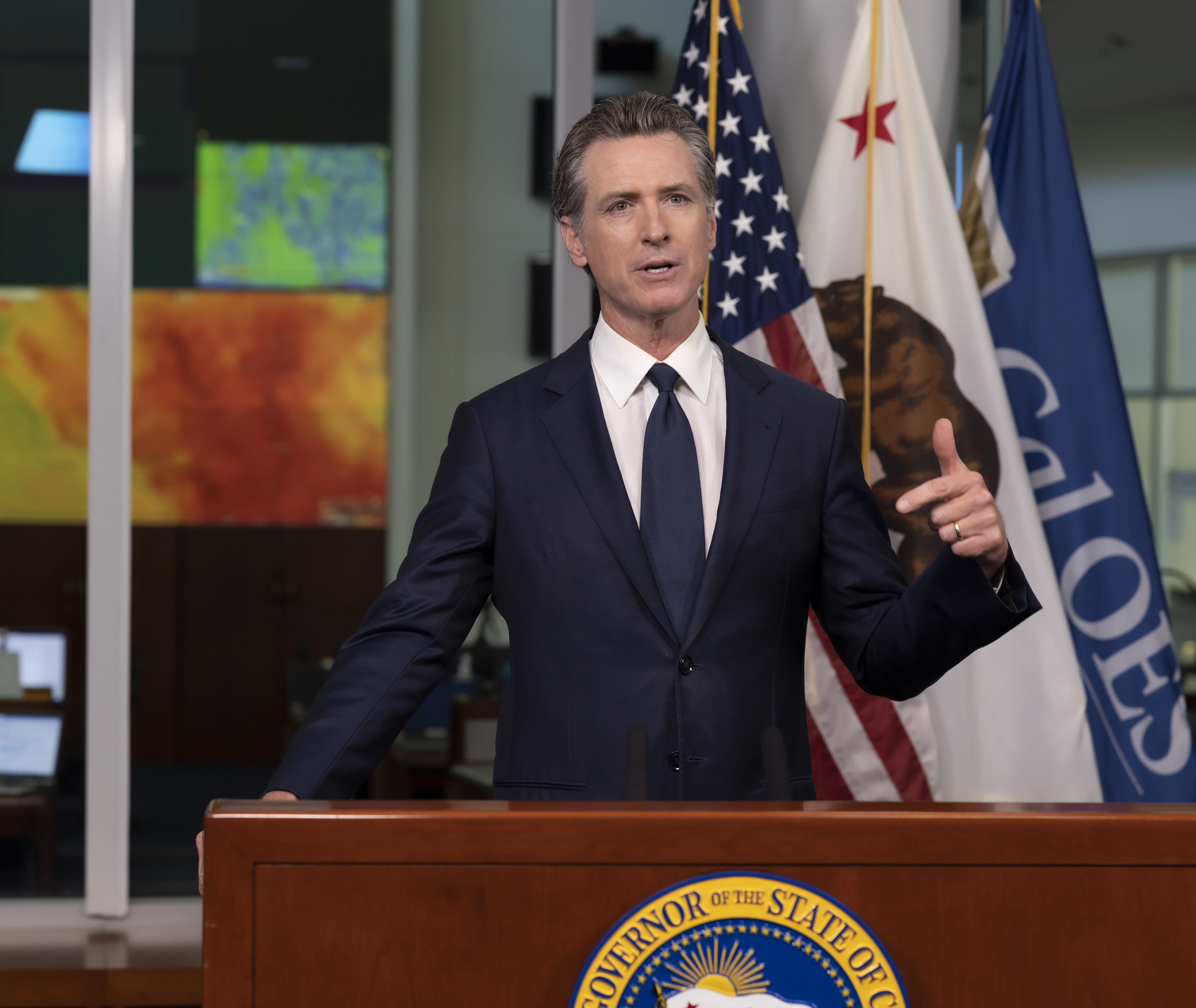Week-long heat wave expected to strain the electrical grid
California takes steps to keep the lights on during the immediate emergency and continues to accelerate the clean energy transition
SACRAMENTO – Beginning Wednesday, California and the western U.S. will experience extreme heat that will strain the grid with increased energy demands. In response, Governor Gavin Newsom has proclaimed a State of Emergency to temporarily increase energy production and reduce demand. The California Independent System Operator has called a Flex Alert for today, August 31, asking Californians to reduce their electricity consumption between 4 p.m. and 9 p.m. to save power and reduce the risk of outages.
Actions the state has taken to accelerate our transition to clean energy have put an estimated 4,000 megawatts on the grid that were not available in July 2020. Since then, the state has also developed emergency measures including adding generators and a Strategic Energy Reserve, additional procurement, and demand response to produce 2,000 megawatts available to respond to emergency conditions like what we are facing today. However, because this heat wave is impacting the entire western United States, limited energy resources are being stretched across multiple states. The prolonged drought has also greatly reduced the state’s ability to generate hydroelectric power. Additionally, the duration of this heat wave is unlike those experienced in recent history increasing the length of time the grid will face peak demand.
“This is just the latest reminder of how real the climate crisis is, and how it is impacting the everyday lives of Californians,” said Governor Newsom. “While we are taking steps to get us through the immediate crisis, this reinforces the need for urgent action to end our dependence on fossil fuels that are destroying our climate and making these heat waves hotter and more common.”

Governor Newsom announces emergency actions to increase energy supplies during this week’s heat wave.
This emergency proclamation will allow power plants to generate additional electricity, permits use of backup generators to reduce the amount of energy they need to draw from the grid during the periods of peak energy demand during this heat wave, and allows ships in California ports to reduce their consumption of electricity from the grid. These are emergency, temporary measures, and the state will implement additional mitigation measures to counteract the increased emissions they will cause.
Temperatures are forecasted to begin rising Wednesday, August 31, intensifying through the holiday weekend and extending to Wednesday, September 7. In what’s likely to be a record heat wave in the West, temperatures in Northern California are expected to be 10-20 degrees warmer than normal, and Southern California temperatures are expected to be 10-18 degrees warmer than normal.
The California Independent System Operator called on Californians to reduce their energy use via Flex Alert today, and will likely issue additional Flex Alerts in the coming days. For the coming week, and especially on Sunday and Monday, Californians should use their AC to pre-cool their homes before 4 p.m., and use major appliances like the washer and dryer during this period. From 4 p.m. to 9 p.m., Californians should set their thermostat to 78 degrees or higher, avoid using major appliances and turn off unnecessary lights, unless it is unsafe for them to do so.
Today’s action comes amid climate-driven changes to weather patterns across the western United States making heat waves more frequent and severe, taking a toll on public health and critical infrastructure. Extreme heat especially endangers workers, children, seniors, historically underserved and overburdened communities, and people with underlying health conditions – more information about workers’ rights and resources for workers can be found HERE and HERE. Resources for Californians facing extreme heat, including safety tips and other information, can be found HERE. A map of cooling centers is available HERE.
Severe heat is dangerous to everyone and can be fatal, especially when temperature extremes last more than a couple of days. Factors that increase risk include advanced age, chronic and severe illness, and environmental overexposure (e.g. certain jobs or homelessness). If you care for someone at increased risk, please:
- Keep in regular contact with that person, ensure they can access air conditioned buildings (e.g. cooling centers, public buildings), and keep hydrated
- Watch out for heat-related illnesses, especially heat stroke, and call 9-1-1 if needed
- Wear lightweight, light colored, loose-fitting clothing. Wear sunscreen. Try to be less active during the hottest part of the day. Rest often and pace yourself
- Don’t forget to protect your pets from the heat, and never leave a child or pet in the car, even if the windows are partially open.
